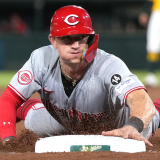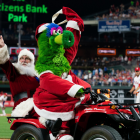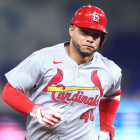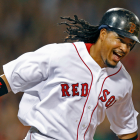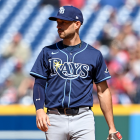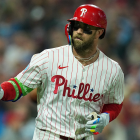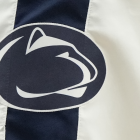
2013 Prospect Watch: Minnesota Twins
Most of the Twins' top minor-league talent sits in the low minors. Can anybody help out this year?

Prior to the start of the season, we'll highlight a few players in each team's minor-league system to let you know which players you should be paying attention to throughout the year. These aren't meant to be comprehensive top-prospect lists, but should provide a look at some key players within each team's organization.
Full spring training coverage
More Twins spring training content | Camp Report | Likes, Dislikes | Team Preview
The Twins' major-league team is in bad shape: 2012 marked the club's second-straight 90-loss season and the team on the field this year doesn't sport any impact additions. But the Twins have recovered from such depths before -- they lost 90 games in 1999 and 2000 but went on to reach the playoffs six times in the next decade. The Twins built those teams by drafting and developing young talent at a nearly unmatched level. They'll have to do it again to regain their previous respectability.
2013 Impact Player
Kyle Gibson
The rotation was a wasteland for Minnesota last year. Vance Worley should help, but additions such as Kevin Correia and Mike Pelfrey are uninspiring. Gibson, 25, missed most of the 2012 season recovering from Tommy John surgery and he struggled with command upon his return. Good news, though: The velocity on his fastball (92-94 mph) and slider (80-84) were solid when he pitched in the Arizona Fall League to get extra work to end the season.
Even though hits fell in -- he allowed a .456 BABIP -- he struck out 28 batters in 23 1/3 innings and didn't allow a home run in the thin desert air. With a little more experience throwing on his reconstructed arm, he should be able to smooth out the edges and rediscover the form that made him the Twins' top pitching prospect heading into the 2011 season.
And with so few options available to the Twins at the big-league level, Gibson should get a chance to show his stuff in Minneapolis sooner rather than later.
Future Star
Miguel Sano
On the 20-80 scale scouts use to evaluate players, the 80 maximum score is not used lightly. It is reserved for the best of the best. So when Baseball America says Miguel Sano has 80 power, know that it means he can be one of the best home run hitters in the league. In his age 18 and 19 seasons, Sano hit a combined 48 home runs in just 846 trips to the plate. And that power is still developing.
Sano still has a long way to go before he reaches the majors, though. He'll begin 2013 in the High-A Florida State League, a historically difficult league for hitters. He still has to traverse Double-A and Triple-A before he arrives in Minnesota as well -- even a 2014 ETA may be optimistic.
Additionally, questions remain about his position. Although he has played third base for most of his career, he is rapidly getting too big to keep up the lateral range of motion necessary to play the position.
Many stats sites such as FanGraphs and Baseball-Reference list Sano at 6-foot-3 and 195 pounds, but those numbers come from when he signed with the Twins as a 16-year-old. This year's Baseball America Prospect Handbook lists Sano at 6-3 and 232 pounds, which jives more with what I saw when I watched Sano play with the Low-A Beloit Snappers in 2012. Sano struggled with range and the weight transfer necessary to make even routine plays at third base. But even if Sano ends up in a corner outfield spot or (more likely) at first base, his power will play just fine should his development continue as planned.
Wild Card
Trevor May
The Twins' farm system is full of intriguing players in the low minors, but the problem is so many of them are, like Sano, years from the major leagues. The acquisition of Double-A starter May from Philadelphia should help shore up the depth in the upper minors. May is one of just three players ranked in Baseball America's Top 10 Twins prospects born in 1989 or later.
But there's a reason May, the Phillies' top prospect entering 2012, was available (along with Worley) for just center fielder Ben Revere. May couldn't handle a promotion to Double-A in 2012, as he allowed 22 home runs in 28 starts and finished with a 4.87 ERA. May has great stuff -- a fastball that touches the mid-90s and a sharp slider and curveball -- and he has struck out well over a batter per inning since starting full-season ball in 2009.
But his control needs work. He walked a horrid 7.8 batters per nine innings in High-A in 2010 and a 4.7 BB/9 in 2012 only compounded his home-run issues. As such, May will likely be asked to repeat Double-A this year. If he can put things together, though, a 2013 major-league debut is not out of the question. Look for him to be in the rotation by opening day 2014.
For more up-to-the-minute news and analysis on the latest rumors from bloggers Chris Cwik, Jack Moore and R.J. White, follow @MLBRumorsCBS.





